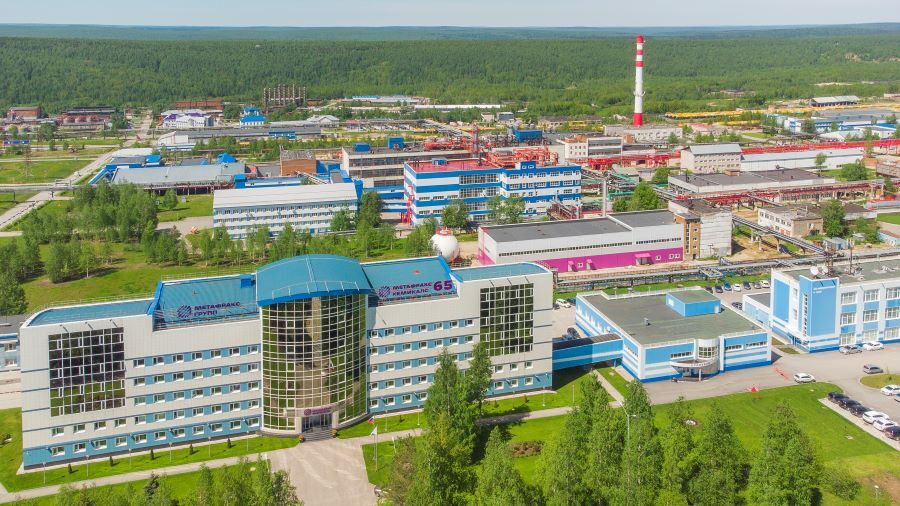Forty-year-long synthesis

The team of polyorganic materials and polyatomic alcohols production (PMPA) of "Metafrax Chemicals" JSC celebrated the 40th anniversary of the plant.
Production workers, veterans and guests gathered for the celebration. The heads of the enterprise came to congratulate the team. Aleksandr Vdovin, the Technical Director of the enterprise, thanked the production veterans for their responsibility, for the plant traditions that are being preserved and multiplied today, and thanked the plant team for their coordinated, high-quality work.
Kind words and wishes addressed to veterans and the team were said by former heads of the division – Andrey Eremeev, the Technical Development Director of the company and Andrey Semerikov, the Deputy Technical Director, Lyudmila Krasnykh, the chairman of the trade union organization of "Metafrax" and Vadim Dik, the head of production of PMPA. On this celebratory evening, more than 90 people were awarded with recognition letters from the company and certificates of the regional committee of the Roskhimprofsoyuz.
The history of the production facility began in 1966, when the Ministry of Chemical Industry of the USSR issued an order appointing a commission for selection of a site for the construction of formalin and pentaerythritol plants at the Gubakha Chemical Plant. The builders started the construction of the facilities in 1973. The project had foreseen the production of formalin as a raw material for pentaerythritol; hexamine was planned to be obtained only in necessary cases. But hexamine turned out to be more necessary for the country during construction. By order of the Ministry, all efforts were concentrated on this production. The first hexamine at Gubakha site was obtained in August of 1980.
After putting the plant into operation, the builders began to construct the pentaerythritol production in earnest. The Certificate for putting the pentaerythritol production facilities into operation was signed on December 31st, 1982. The learning of manufacturing process for the new product was slow; the technology used as a basis for the project development turned out to be ineffective. It was decided to redesign the production to a more progressive formate (alkaline) method of obtaining the product. The production was upgraded with the installation of new equipment. In 2001, the plant reached its design capacity.
At the beginning of the XXI century, a gradual implementation of the reconstruction program began at the plant, which resulted in putting an additional process line into operation. Production was then increased by more than 2 times - up to 23 thousand tons per year. In 2009, construction began for a new hexamine production facility, which used the liquid-phase method. In February of 2011, the first bags of products from the automatic packaging line were sent to the consumer. In 2014, the micronized product plant was started up. In 2018, another large-scale production reconstruction program allowed to start-up a dipentaerythritol extraction plant and last year it allowed to put a secondary mother liquor treatment unit into operation. Due to this project, the formation of liquid waste has been reduced significantly. In the history of the plant last year was also marked by the opening of a production plant for a new product – paraformaldehyde.